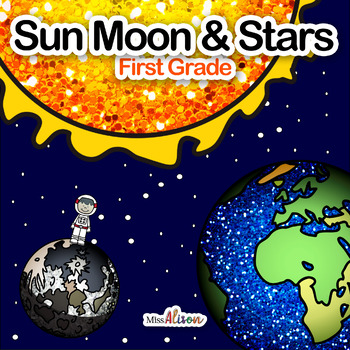Sun, Moon, and Stars: A NGSS Science Unit
- PDF
- Easel Activity
What educators are saying
Also included in
- Thank you for viewing my first grade science bundle! I created each unit to align with the new NGSS standards. Each unit is designed to be engaging and hands on for students, and accessible and with minimal prep for teachers. This First Grade Science Bundle that I have created aligns with Mystery ScPrice $20.00Original Price $26.00Save $6.00
Description
This Sun, Moon and Stars Science Unit that I have created aligns with NGSS (Next Generation Science Standards) and Mystery Science Kindergarten Unit 2: Spinning Sky (this product can also be used without pairing it with Mystery Science)
Save over 20% on the First Grade Science Bundle
What is included in this Sun, Moon and Stars Unit:
- 8 teacher lesson plans
- vocabulary cards
- printable / projectable books
- Sun, Moon, and Stars science journal
- suggested videos to watch
Included Lessons:
- Lesson 1: The Sun
- Lesson 2: Shadows Sort
- Lesson 3: Seasons Match-Up
- Lesson 4: The Moon
- Lesson 5: The Moon Phases
- Lesson 6: Sun, Earth and Moon Rotation
- Lesson 7: The Stars
- Lesson 8: Constellations
Standards Covered:
1-ESS1-1. Use observations of the sun, moon, and stars to describe patterns that can be predicted. [Clarification Statement: Examples of patterns could include that the sun and moon appear to rise in one part of the sky, move across the sky, and set; and stars other than our sun are visible at night but not during the day
1-ESS1-2. Make observations at different times of year to relate the amount of daylight to the time of year. [Clarification Statement: Emphasis is on relative comparisons of the amount of daylight in the winter to the amount in the spring or fall.]
You can find more science resources in my store below:
Light and Sounds: A First Grade NGSS Science Unit
Plants and Animals Structure and Survival
Animal Biodiversity: A Second Grade NGSS Science Unit
Plant Adaptations: A Second Grade NGSS Unit
***Follow my store! You will receive an email every time I put up a freebie or a new product for sale.







